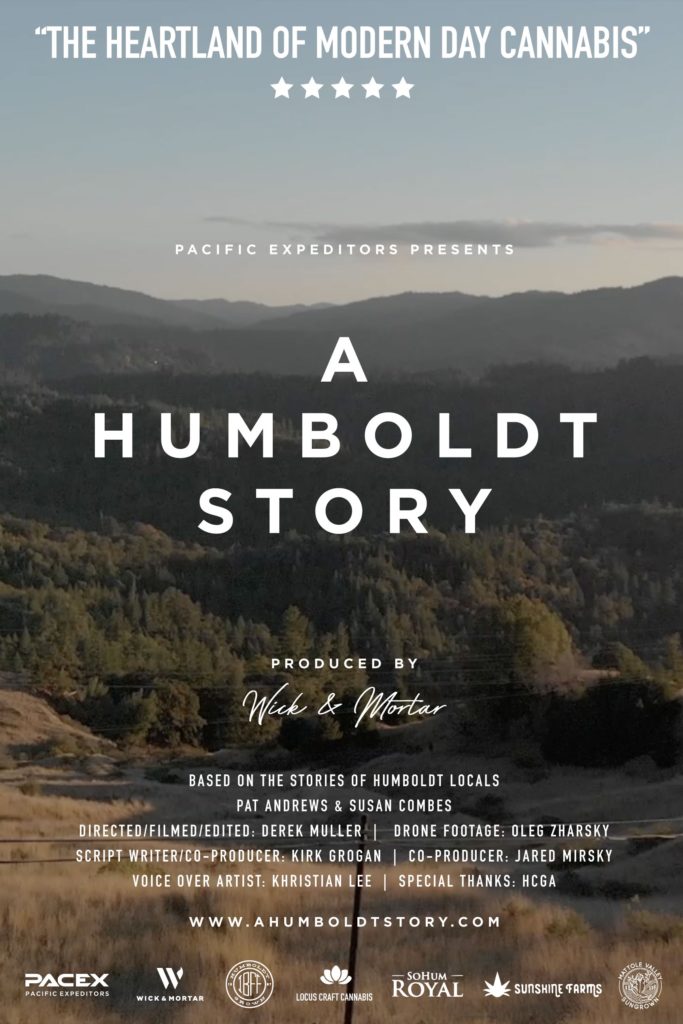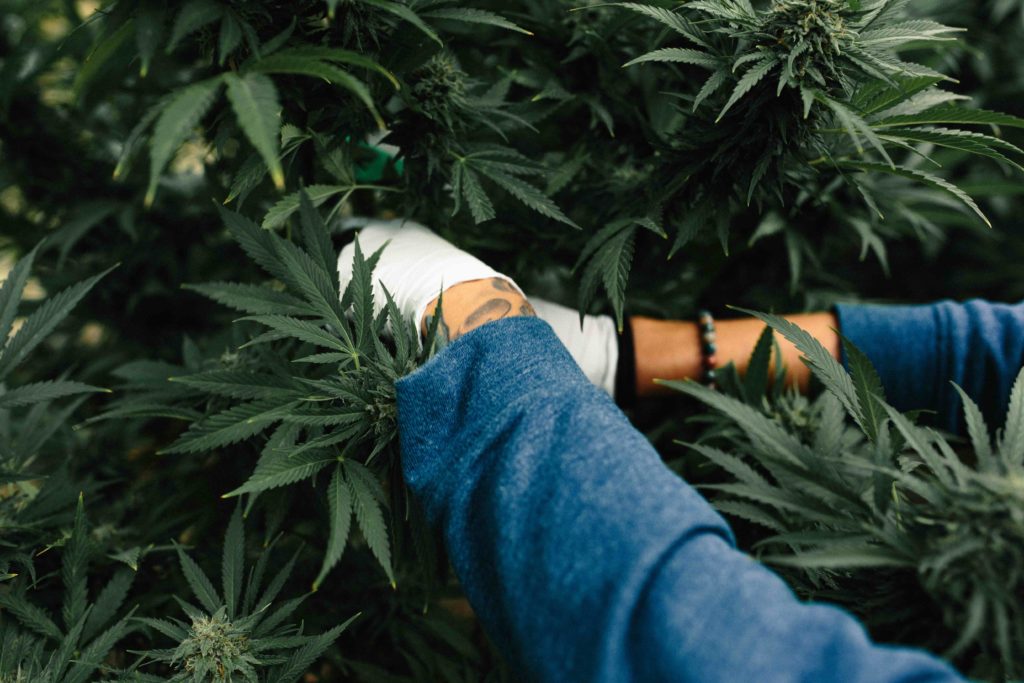The true story of Humboldt cannabis isn’t the one you’ve probably heard. Netflix’s documentary “Murder Mountain” aimed to tell this story. But they left out the most crucial detail: the heart of Humboldt.
When Pacific Expeditors came to Wick & Mortar to create a short documentary about the history of Humboldt County, we knew how important this piece was to get right. Not just because Humboldt County is home to the world’s best weed, which it is. But because Humboldt’s story is the foundation of the entire modern day cannabis industry. Its legacy deserves to be told with care and truth.

The True Timeline of Humboldt Cannabis
Let’s travel back in time to when Humboldt was truly born. In the ’60s and ’70s, after a violent and disruptive war in Vietnam, many citizens came face-to-face with the reality of the war and its impact. There was a desire within many to return to a kinder, loving, simpler way of life. It felt like this could only happen outside the city. It was a time of coming home for many. And their progressive values of community, education, accessible healthcare, and living off the land were their foundation.
As told in our short documentary, “A Humboldt Story”, Pat Andrews of Ice Box Flat Farms, and Susan Combs of Locust Craft Cannabis, describe the “Back-to-the-Land” movement as being born out of the desire to create a better community and life for these people and the next generation. People moved out of the city for a more supportive and thriving community. One small group of young adults, mostly city kids, came together to build just that. It was the start of a new utopian society where values came first.
Humboldt’s Back-to-the-Land Movement
Susan describes vividly, “It was born out of necessity”… “[they] were driven to create a better community, a better life for themselves that didn’t involve all that rat race that was going on in the city, and the excesses that were perceived in the city, to lead a simpler life for their kids.”
After decades of mass deforestation, the land was cheap in Humboldt County. This group of “hippies” pooled and saved their money, and bought plots of land. These people floated the dying local economy and funding growth in this dying American town. They built clinics, radio stations, fire departments, newspapers, environmental movements, schoolhouses, community centers, and more. They built these community staples to support the group’s progressive values. As Susan puts it, “[This] was not on the backs of people who were whacked out of their brains [on drugs] all the time,” these people were smart, caring, and economical.
Micro-farms supported this mission to create a better community. They didn’t know that this land, after years of pillaging by the logging industry, also made for an ideal micro-climate. Its rolling fogs, rich soil, and untamed watersheds perfect for farming and especially for cultivating cannabis. At a time when people imported cannabis, this fresh, locally grown cannabis was a prize. At this point, these plants weren’t grown as a cash crop. It was grown for personal use.
Campaign Against Marijuana Planting (CAMP) Era
Humboldt cannabis gained popularity as this small community began to share their crops. As this luscious flower made its way down to LA and other larger cities, the feedback was clear. This was the best cannabis on the market. People wanted more. The cost of cannabis grew to $4000/lb, and suddenly, these small crops became extremely profitable. Cultivating cannabis for the masses was never the goal, but it was becoming a vehicle for financial stability. This was the blessing and curse that brought an influx of people looking to grab their piece of the Humboldt cannabis pie.
As the onslaught of new farmers and their help penetrated this community, the landscape and the attention to what was happening within it began to change. The government caught wind of these profits and started to clamp down on this community. Within no time, the CAMP (Campaign Against Marijuana Planting) helicopters flew overhead targeting farms and burnt them to the ground.
This loving and progressive Humboldt community faced major threat. Too many farms were destroyed and the risk was too great to discuss their work with outsiders. No farmers had interest in talking to the press for fear that it would draw additional unwanted attention. Journalists unsuccessfully tried to speak with farmers.
As described by Pat, “Journalists would come up to get the ‘real story of Humboldt County’ and no one would talk to them…” he explained, “they’d end up in Eureka and the only story they could get was from the sheriffs.” So the media reported what law enforcement told them. They described Humboldt County as a criminal-run territory. “A lawless enclave of Vietnam veterans that had these militias in the woods who were booby-trapping gardens,” as Pat describes it. “That was the first misconception planted during that era.” The lies spread. And the image of what was once a beautiful utopia was twisted into that of mafia-like criminals and gangs.
“It was a war on the people, not a war on the plant”, explains Pat.
July through October, various ground crews and helicopters would infiltrate the forests and terrorize people that lived amongst the hills. The government’s approach to the perceived “problem” drove farmers further into the woods. That era defined the community that stayed. It was what made them growers. This military force was there to get them, but they weren’t giving up. It made the farmers more determined. Quickly, a camaraderie grew between farms. People looked out for each other. They helped protect each other from the onslaught of raids.
Humboldt’s Green Rush

The “green rush” came in the mid-90s. Some of the raids slowed down after the passing of Proposition 215, which made cannabis legal for medical use. But they certainly didn’t stop. As Susan explains, it became common knowledge that “if you had to hire people to tend your crop, you were growing too big; therefore, putting your neighbor at risk because of collateral damage”. The government started to realize they were losing the battle, and Californians were sick of wasting resources on pushing back on this plant. People wanted California cannabis.
Still to this day, being in complete compliance is not enough. Even farms completely up to code were at risk. But the persistence of farmers is what got them this far. Their determination exists because they love what they do. Because these crops are grown on a smaller scale, the attention to detail, the attention to each individual plant is impeccable. As Pat says “When I sit down with 5 friends at the table we represent over a hundred years of cultivation knowledge sitting around that table. You’re never going to find that in any other place in the world”.
Susan sums up the essence of Humboldt perfectly, “The legacy growers in Humboldt came here because of the love of the land, and to explore the possibilities. And then, to become this cosmic spiritual connection to this incredible place – that by gods good grace we ended up living in… We could see what we needed to do, what we wanted to do, to continue taking care of and in many cases restore it”. She says. With tears in her eyes, she said that living in Humboldt has completely changed her. “[Its] this back to the land, growing my own food, acceptance of self, and a measure of strength that I almost can’t describe – and I’m proud of it. I couldn’t have done it without Humboldt County. It almost makes me want to cry. Thank you, Humboldt.”
The quality of Humboldt homegrown is still to this day, some of the best cannabis in the world. This is the heartland of modern day cannabis.
You can watch the full documentary short, “A Humboldt Story” here.



